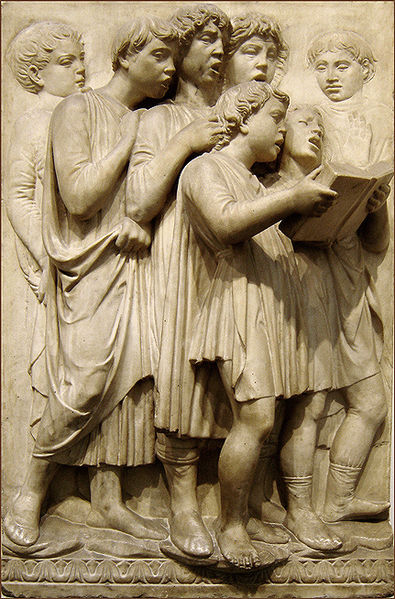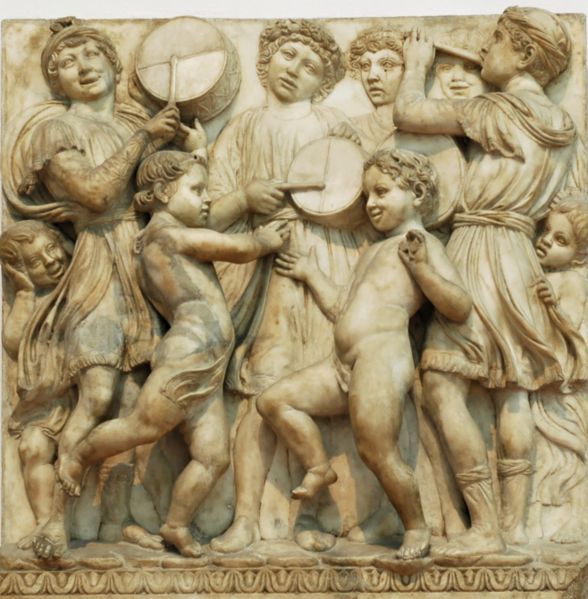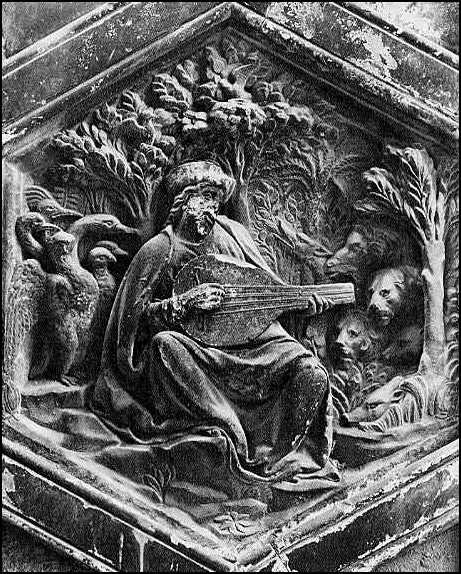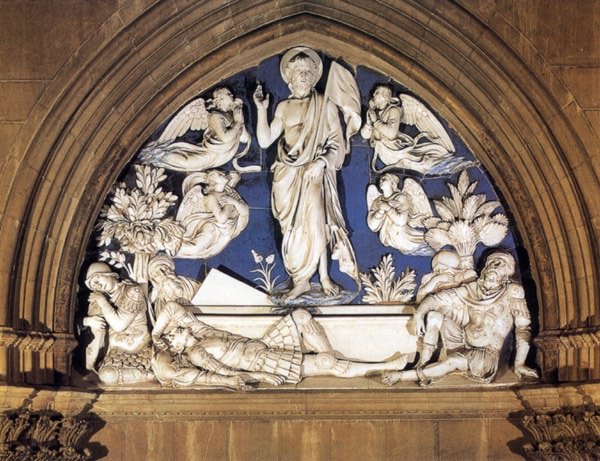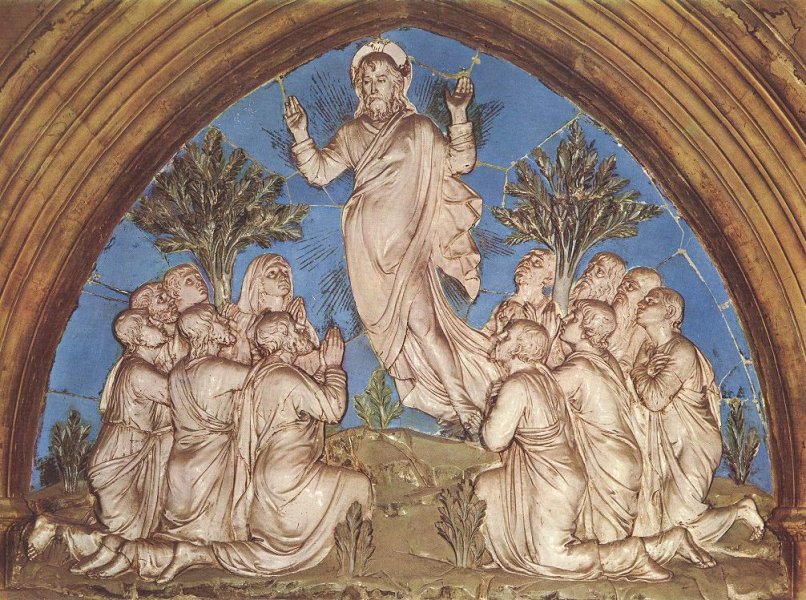<Back to Index>
- Philosopher Cesare Cremonini, 1550
- Sculptor Luca della Robbia, 1400
- King of Sicily Roger II, 1095
PAGE SPONSOR
Luca della Robbia (1400–1482) was an Italian sculptor from Florence, noted for his terra-cotta roundels.
Luca Della Robbia developed a pottery glaze that made his creations more durable in the outdoors and thus suitable for use on the exterior of buildings. His work is noted for its charm rather than the drama of the work of some of his contemporaries. Two of his famous works are The Nativity, circa 1460, and Madonna and Child, circa 1475. He is the first of a dynasty of important pottery artists: Andrea della Robbia (his nephew) and Giovanni della Robbia (his grandnephew, son of Andrea).
Della Robbia was praised by his compatriot Leon Battista Alberti for genius comparable to that of the sculptors Donatello and Lorenzo Ghiberti, the architect Filippo Brunelleschi, and the painter Masaccio.
By ranking him with contemporary artists of this stature, Alberti
reminds us of the interest and strength of Luca's work in marble and
bronze, as well as in the terra-cottas always associated with his name. His first documented commission, the Cantoria ("Singing Gallery"; 1431 - 1438) for the Cathedral of Florence proves
that he must have been an accomplished artist long before joining the
Sculptors' Guild in 1432. The Singing Gallery shows children singing,
dancing, and making music to "praise the Lord" in the words of Psalm
150. Their figures are at once lively, finely observed, and gracefully
combined in groups designed to fit the ten panels of the gallery. In
the next two decades della Robbia executed important commissions in
marble and bronze: a series of marble reliefs (1437) for the bell tower
of the Cathedral of Florence; a marble and enameled terra-cotta
tabernacle (1443), now in S. Maria in Peretola; bronze angels to enrich
the Singing Gallery; and, in collaboration with Michelozzo,
the large project of bronze doors for the Sacristy of the Cathedral.
These doors were not finished until 1469; their reliance on a few
figures placed in simple, orderly compositions against a flat ground
contrasts sharply with the elaborate pictorial effects of Lorenzo Ghiberti's more famous Baptistery doors. His earliest surviving freestanding sculpture is the white tin-glazed terracotta Visitation in the church of San Giovanni Fuoricivitas of
Pistoia, dating to 1445. Although the date of della Robbia's first work
in colored glazed terra-cotta is not known, his control of this medium
was clearly enough recognized to justify two major commissions for the
duomo of Florence: the large reliefs of the Resurrection (also from 1445) and the Ascension of Christ (1446).
The pliant medium of baked clay covered with a "slip" of vitrified lead
and refined permitted a lustrous, polished surface capable of
reflecting light and using color that was beautifully appropriate for
architectural sculpture. Whether animating the vast, somber space of
the Cathedral or in the series Twelve Apostles gracing
the pristine surfaces of the small Pazzi Chapel (1443 - 1450) in
Florence, della Robbia's reliefs in this medium achieved a perfection
never before or since attained. Working
with assistants, including members of his own family, della Robbia
produced a number of decorative reliefs and altarpieces until the end
of his life. One of the finest and richest examples is the enameled
terra-cotta ceiling (1466) of the Chapel of the Cardinal of Portugal in
S. Miniato, Florence. Luca della Robbia died in Florence in February 1483.
There
are no certain details of Luca della Robbia's youth, training, or early
sculpture, and many of his most popular later works cannot be dated
absolutely. He was born in Florence, Italy.
